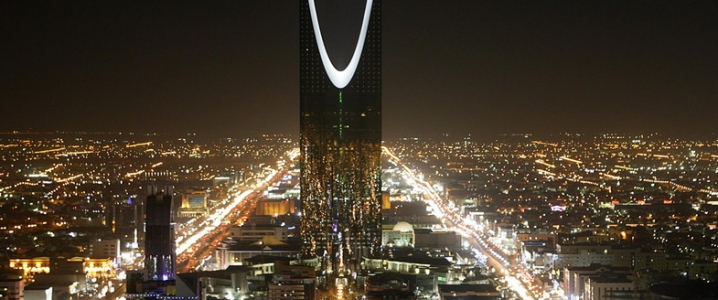In October the IMF revised its forecast for Saudi economic growth in 2018 and 2019, predicting GDP would increase by 2.2 percent and 2.4 percent, respectively, up on the 1.9 percent previously projected for both years and a considerable increase on a contraction of 0.9 percent in 2017.
The fund said the recovery was driven by higher energy prices, which improved external balances, along with reforms undertaken by the government to increase domestic labour participation and strengthen the business environment.
Growth was supported by inflation remaining stable throughout much of 2018 after an initial early-year surge. The introduction of a 5 percent value-added tax at the beginning of the year saw inflation jump from 0.2 percent in December 2017 to 3 percent in January, however this eased to 2.1 percent in both June and September, before edging up slightly to 2.4 percent in October.
Reforms aim to boost domestic employment prospects
2018 also saw the government implement a number of notable economic and social reforms, including granting women the right to drive, moves to open up key sectors to foreign investment, progress on the partial privatisation of state assets and the sanctioning of the return of cinemas to the entertainment scene.
The country’s reform process, which aligns with the broader Vision 2030 goals of boosting private and foreign investment in the economy, has also sought to reduce unemployment levels among Saudi citizens.
With the goal of slashing unemployment from current rates of 12.8 percent to 9 percent by 2020, the government increased the number of employment segments reserved for Saudi nationals throughout the year, with many of the reforms targeting the retail sector. Related: Can China Save South Sudan’s Oil Sector?
The scope of job opportunities is expected to widen in 2019, with more retail and wholesale businesses to be ring-fenced against expatriate employment. These include positions related to the retailing of medical supplies and equipment, auto parts, building and construction materials, carpets, bicycles and confectionery.
Real estate sector sluggish despite incentive scheme
One sector that underperformed in 2018 was real estate, with property prices in the third quarter down 3.1 percent compared to the same period in 2017, according to data issued by GaStat. The retreat was led by the residential segment, which saw prices fall by 3.8 percent, followed by a 2 percent dip in the commercial component of the market.
This sluggish performance came despite efforts to boost residential activity: in February the government launched a SR120bn ($32bn) scheme to provide credit support to homebuyers, including incentives to mortgage lenders, loan guarantees, and interest-free loans and incentives for property developers. The initiative is part of plans to lift home ownership levels from their present rate of 50 percent to 70 percent by 2030.
Capital markets experience ups and downs
Saudi Arabia’s capital markets experienced a solid year in 2018, with the main index of the Saudi Stock Exchange (Tadawul) increasing by around 8.5 percent from the year-opening mark of 7226 to reach around 7850 points by early December.
The market was boosted by the June announcement that the country would be included on the MSCI emerging markets index as of June 2019, a move forecast to generate inflows of around $10bn and increase the exchange’s appeal to individual and institutional investors. Related: Dark Horse In Battery Tech Could Beat Tesla
The growth could be further increased following the September announcement that the Tadawul would broaden its product range by introducing exchange-traded derivatives in the second-half of 2019.
While the index reached yearly highs of around 8500 in late July, much of these gains were offset late in the year.
There was a move out of local stocks following the controversy surrounding the death of Saudi journalist Jamal Khashoggi in the Saudi Arabian consulate in Istanbul. The exchange was also buffeted by the sharp fall in oil prices late in 2018, which fell from yearly highs of more than $86 per barrel in early October to around $63 per barrel in early December, resulting in many of Kingdom’s petrochemical and upstream producers experiencing an easing of share values.
Despite the fall in prices, Saudi Arabia maintained a high level of oil production, with international media reporting that output ranged between all-time highs of between 11.1m and 11.3m barrels per day (bpd) in November, some 1m bpd higher than the early months of the year.
More Top Reads From Oilprice.com:
- Chinese Refiners Aren’t Buying U.S. Crude
- UBS: Expect $80 Brent Next Year
- Interest Rate Hike Hits Oil Hard


















